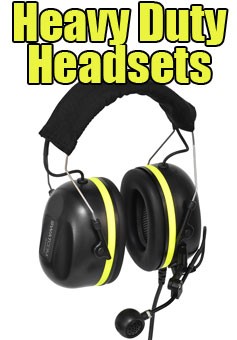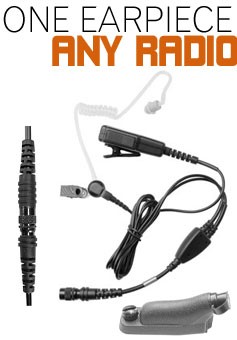
In a world that often feels like it's getting louder by the day, the value of silence is becoming increasingly precious. Day in and day out, our ears are bombarded with a cacophony of sounds—some pleasant and some not-so-much. But when does this audible bombardment cross the line from merely unpleasant to downright dangerous? For those whose work environments regularly sound like the cogs of industry are churning around them, the answer may lie in the simple yet effective tool of ear defenders.
The importance of hearing protection cannot be overstated, particularly for professionals who work in construction, manufacturing, or any other place where the decibels threaten to exceed safe exposure levels. In this post, we'll explore the intricacies of when to don these protective earmuffs, why they're essential, and how to choose the right ones to safeguard the sense that often goes overlooked—our hearing.
The Decibel Dosage: Understanding Your Noise Threshold
Before we can talk about when to wear ear defenders, it's crucial to comprehend what kind of sounds can harm your hearing. The threshold for safe noise exposure is around 85 decibels (dB). To put that number in perspective, a typical conversation hovers at about 60-70 dB, a lawnmower can hit 90 dB, and a jet engine at full takeoff power reaches a staggering 150 dB.
The damage from loud sounds is cumulative; over time, exposure adds up, and the risk of hearing loss increases. Occupational Safety and Health Administration (OSHA) guidelines outline the following permissible exposure times for various noise levels:
- 90 dB - 8 hours
- 95 dB - 4 hours
- 100 dB - 2 hours
- 105 dB - 1 hour
- 110 dB - 30 minutes or less
- 115 dB - Impulse noise that can cause immediate damage
By understanding the decibel dosage, you'll know when it's time to reach for those ear defenders.
Recognizing The Need For Defenders: Environmental and Personal Cues
Being aware of dangerous noise levels is a great start, but recognizing when to wear ear defenders requires some environmental and personal cues.
Know Your Environment
Certain work environments are inherently louder than others. For instance, if your job involves using power tools, you're often exposed to high levels of noise that can cause hearing damage. Factories and construction sites are also prime examples of places where noise levels can quickly exceed safe thresholds.
Listen To Your Body
Your body can often tell you more than you think. If you find yourself raising your voice to be heard by someone at arm's length, the noise level is likely too high. Additionally, if you experience tinnitus (ringing in the ears) after exposure to loud sounds, it's a sign that you've been overexposed and should consider using ear defenders in the future.
Consider Your Equipment
Some machines and tools are designed with noise mitigation in mind, but others are not. If the equipment or tool you're using doesn't adequately muffle the sound, it's time to add a layer of protection with ear defenders.
Navigating The Varieties of Ear Defenders
Ear defenders come in a range of types and styles, designed to suit different work environments and personal preferences. Broadly speaking, there are three primary categories of hearing protection:
Ear Muffs
These are the classic choice for ear protection, often consisting of cushioned ear cups that seal around the ears and an adjustable headband. They are convenient, especially in dirty or hazardous work environments where ear plugs might not be hygienic, however, masks or other types of equipment might not have space for them.
Ear Plugs
Ear plugs are small, usually foam, devices that are inserted directly into the ear canal. They're compact and can provide a close fit for better protection. Employees who need to wear additional gear or masks can also find ear plugs less intrusive.
Canal Caps
Similar to ear plugs, canal caps are ear defenders that also sit inside the ear canal. They are typically connected by a band that sits on the back of the neck, which can be more comfortable or preferred for certain activities.
When considering the right ear defenders for you, it's important to factor in not just the noise level you're exposed to, but also the comfort and fit of the equipment, as strained or overly pressure on ears can also be harmful. Plus, think about hygiene, ease of use, and the ability to communicate effectively while wearing them.
The Right Fit: Ensuring Your Ear Protectors Do Their Job
Buying the most expensive ear defender won't mean a thing if it's not worn correctly. Fit is crucial to the effectiveness of the protection. When selecting and using ear defenders, keep the following in mind:
- Check for any damage or wear before use.
- Ensure ear defenders are rated for the level of noise you're exposed to.
- If using ear plugs, make sure to roll them tightly before inserting into the ear canal. They should then expand adequately to create a seal.
- Adjust the headband or neckband to ensure a comfortable but secure fit without overpressure.
- For higher noise levels, consider the use of double protection—wearing both ear plugs and ear muffs together.
Wearing ear defenders correctly will not only protect your hearing but also help you work more comfortably and safely.
The Lasting Impact: Hearing Protection as a Lifelong Practice
Hearing damage is irreversible. Once it happens, it’s usually for life. But by making the simple act of wearing ear defenders a part of your daily routine, you can significantly lower the risks associated with noisy environments. And it's not just for the workplace; recreational activities like concerts and motor sports can also pose serious threats to your hearing.
Remember, the goal is not to just wear ear defenders when the noise is loud, but to wear them any time you're in an environment where the decibels consistently exceed safe levels. Your future self will thank you for the peace and quiet you're preserving today.
In conclusion, the narrative around hearing protection isn't just about regulations and requirements—it's about empowering individuals with the knowledge and tools to take care of their senses. Whether you're a seasoned professional in the trades or an amateur do-it-yourselfer, the use of appropriate ear defenders should be non-negotiable. It's time to elevate the conversation around noise and its impact on our health and productivity, starting with a simple directive: protect your ears, protect your future.
-

Peltor Ear Defenders
these Peltor ear defenders are engineered for maximum comfort and durabilit...
-

-

Adult Ear Defenders
Small: Offers a protection level up to 24db, suitable for moderate noise e...




















